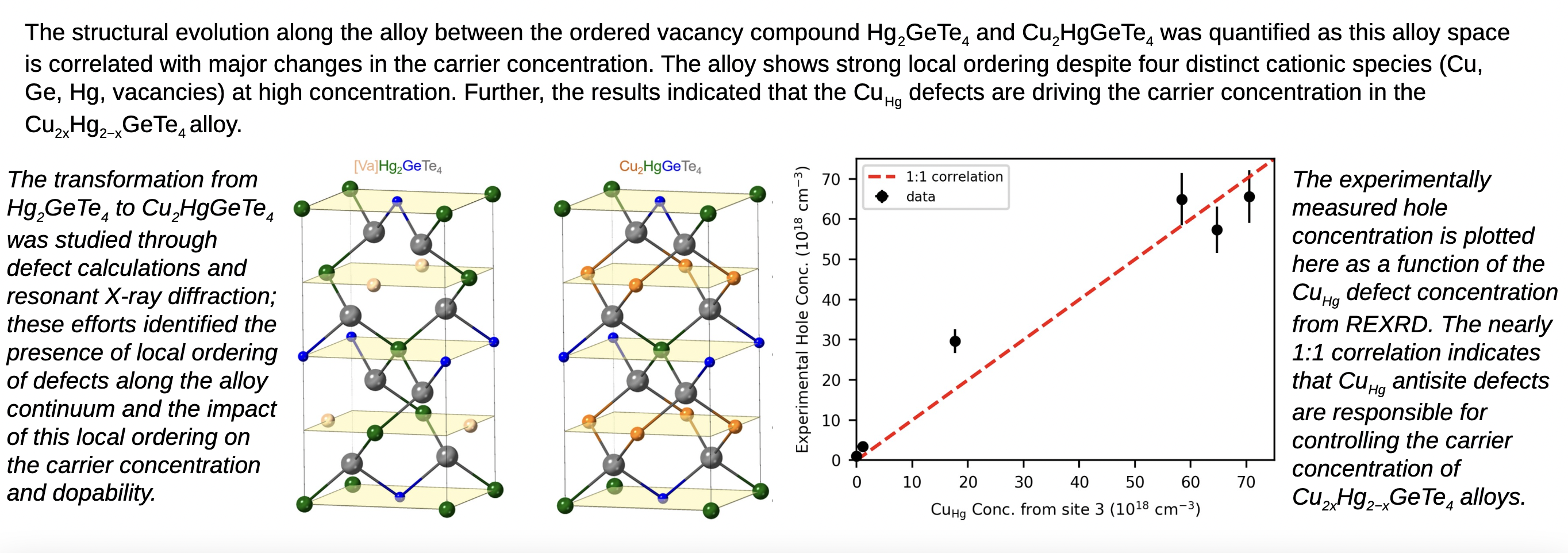Combining Experiment and Computation to Control Doping in Thermoelectric Materials
The structural evolution along the alloy between the ordered vacancy compound Hg2GeTe4and Cu2HgGeTe4 was quantified as this alloy space is correlated with major changes in the carrier concentration. The alloy shows strong local ordering despite four distinct cationic species (Cu, Ge, Hg, vacancies) at high concentration. Further, the results indicated that the CuHg defects are driving the carrier concentration in the Cu2xHg2−xGeTe4 alloy.
The transformation from Hg2GeTe4 to Cu2HgGeTe4 was studied through defect calculations and resonant X-ray diffraction; these efforts identified the presence of local ordering of defects along the alloy continuum and the impact of this local ordering on the carrier concentration and dopability.
The experimentally measured hole concentration is plotted here as a function of the CuHg defect concentration from REXRD. The nearly 1:1 correlation indicates that CuHg antisite defects are responsible for controlling the carrier concentration of Cu2xHg2−xGeTe4 alloys.
